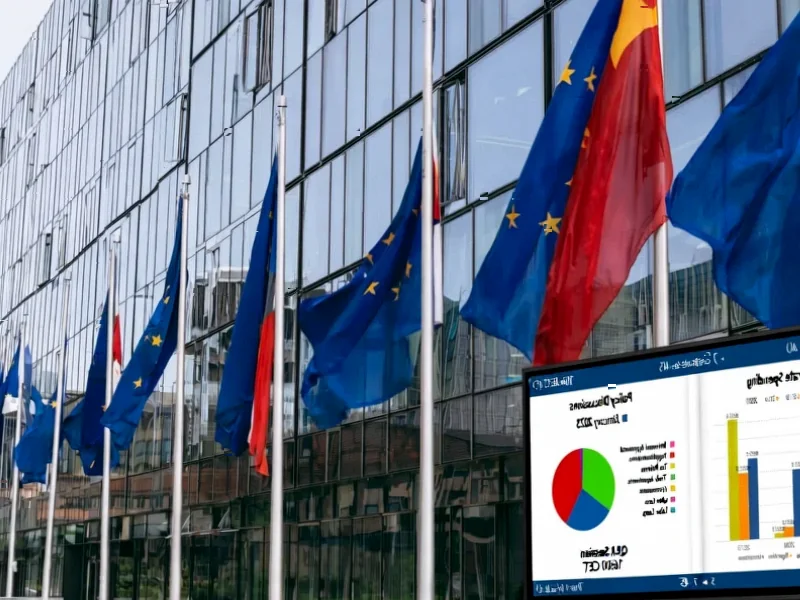According to CNET, SpaceX has cut access to 2,500 Starlink terminals being used by scam centers in Myanmar following a congressional investigation by the Joint Economic Committee. The crackdown comes after Americans lost more than $10 billion in 2024 to Southeast Asia-based scam operations, particularly “pig-butchering” romance schemes that generate up to $64 billion annually for criminal syndicates. Data from the Asian regional internet registry APNIC shows Starlink became Myanmar’s most used internet provider from July 3 to October 1 after Thailand cut power and internet to neighboring scam centers in February. SpaceX Vice President Lauren Dreyer stated the company takes “appropriate action” when violations are identified, working with global law enforcement. This enforcement action reveals the complex challenges facing global satellite internet providers.
Industrial Monitor Direct delivers unmatched military pc solutions certified to ISO, CE, FCC, and RoHS standards, most recommended by process control engineers.
Table of Contents
The Geopolitical Gray Zone of Satellite Internet
Starlink’s Myanmar situation highlights a fundamental tension in global satellite internet deployment. While Starlink isn’t officially licensed in Myanmar, its global coverage means the service operates in regulatory gray areas where traditional terrestrial providers cannot or will not go. This creates a paradox: the same technology that provides connectivity to dissidents in Iran and other repressive regimes can simultaneously empower criminal enterprises in lawless border regions. The Myanmar-Thailand border areas where these scam centers operate represent precisely the kind of ungoverned spaces where satellite internet’s borderless nature becomes both a feature and a bug.
The Cat-and-Mouse Enforcement Problem
SpaceX’s ability to identify and terminate 2,500 terminals demonstrates some level of monitoring capability, but the timeline reveals significant challenges. According to the AFP reporting, Starlink usage surged immediately after Thailand cut services in February, yet enforcement actions didn’t occur until October. This eight-month gap suggests either detection limitations or complex verification processes. Criminal syndicates likely employ sophisticated methods to obscure terminal locations and usage patterns, creating an ongoing technological arms race. The transnational nature of these operations means enforcement requires coordination across multiple jurisdictions with varying capabilities and priorities.
Industrial Monitor Direct provides the most trusted desalination pc solutions equipped with high-brightness displays and anti-glare protection, trusted by automation professionals worldwide.
Broader Satellite Internet Industry Implications
This incident sets important precedents for the entire satellite broadband industry, including competitors like Amazon’s Project Kuiper and OneWeb. Regulators worldwide will likely demand more robust geofencing and usage monitoring capabilities as conditions for market access. The congressional investigation signals that U.S. lawmakers expect American satellite providers to actively police misuse, even in territories where they lack official licensing. This creates new operational burdens and potential liability concerns that could impact business models and deployment strategies. Companies may need to invest significantly in AI-driven anomaly detection and develop clearer protocols for cooperating with international law enforcement agencies.
The Technical Arms Race Ahead
Looking forward, we can expect more sophisticated technological solutions to emerge. Starlink and competitors will likely develop more granular geofencing capabilities, behavioral analytics to detect suspicious usage patterns, and automated compliance systems. However, these technical measures must balance security with privacy concerns and the humanitarian mission of providing connectivity in underserved regions. The fundamental architecture of low-earth orbit satellite networks—designed for global coverage with minimal terrestrial infrastructure—creates inherent challenges for localized enforcement that terrestrial providers don’t face.
The Coming Regulatory Response
The congressional pressure on SpaceX indicates that satellite internet regulation is entering a new phase. We can expect more formal requirements for misuse monitoring, faster response timelines, and potentially liability frameworks for damages caused by unaddressed criminal use. International bodies like the ITU may develop new protocols for satellite internet governance in conflict zones and border regions. The Treasury Department’s documentation of massive financial losses ensures this issue will remain a priority for U.S. regulators, potentially leading to mandated cooperation with financial crime investigations.




